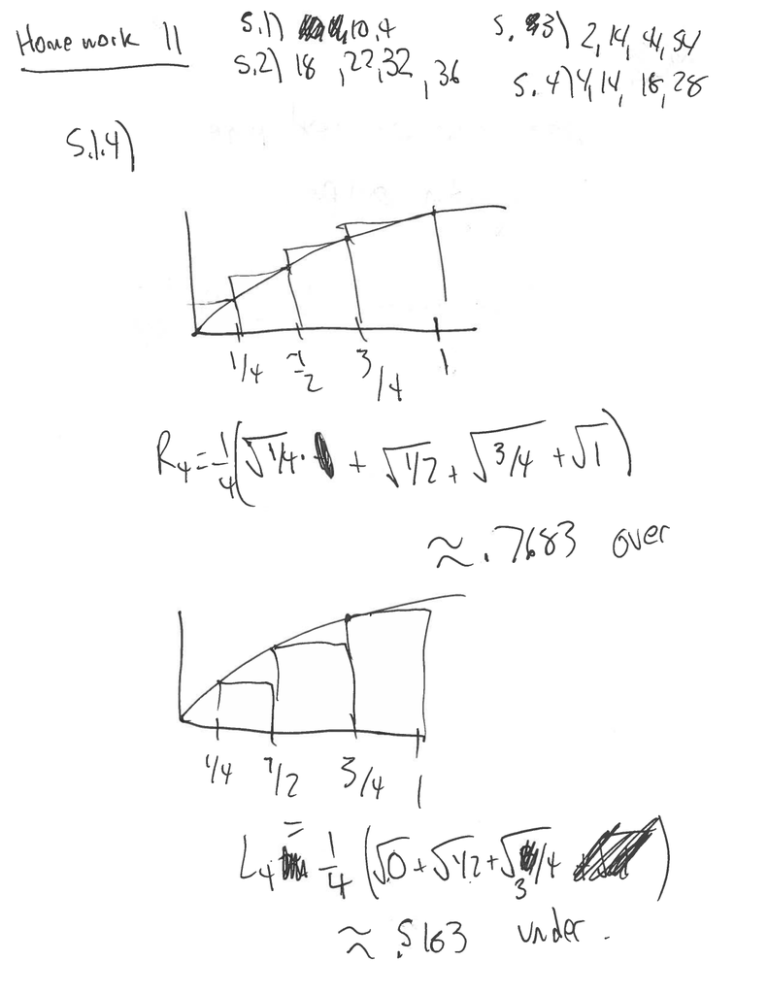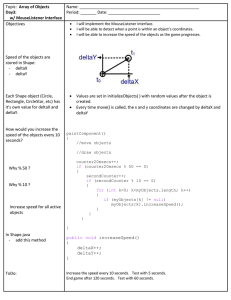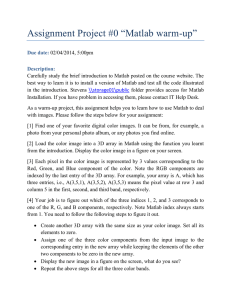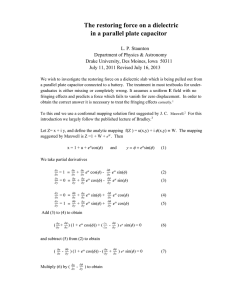1 L. ‘1 J6,c’\9
advertisement

- _r’fn 1 7L) 1 ± (1/) L. J6,c’\9 c\%jj4 ‘1 2 V5 z1 h1b’S 7c I Z7 9)\ \7E’ ‘S I I cJ - nvals [10 30 50 100 1000]; % make array of possible n values: = j = 1:length(nvals) %iterate over n values n = nvals(j); xvals = linspace(1,4, n+1); % returns an array of the interval 1 to 4 %divided into n+1 interval, i.e. our endpoints for 4] so for left endpoints we want to % xvals looks like [1 1.333 % toss the last point, right endpoints we want to toss the first % in MATLAB, this is: ... xvals_right = xvals(Z:end); % chops off first element xvals_left = xvals(1:end-1); % chops off last element deltax f = (4-1)/n; % compute width of each rectangle @(x) log(x); % define our function f using MATLAB syntax = f_right = f(xvals_right); % compute our right endpoint rectangle heights f_left = f(xvals_left); % same for left % notice we can put an array into a function, one of MATLAB’s strenghts Rn Ln = = deltax*sum(f_right) % Rn = sum deltax deltax*sum(f_left) % same for Ln * f(xj) end >> riemann n= 10 Rn= 2.7475 Ln= 2.3316 30 100 Rn= 2.5659 Ln= 2.5243 n= 1000 =2.5473 :n= 2.6139 n \j’c,ILJ€ 50 2. 5865 Ln = 2.5034 n= 2.5431 (3 \ 1 5 J - ‘fli RD 7L () 1” -7)( ) Th 0 /\ç — -7 ( rJ d H / ± ç\ ) ( ‘I c7N II cJ U 5— ‘I -a- 2— N NJ \cI C” CA (N () 37 c) I’ — )\ r\f nf ) LJ —C —9 I C— (I 2 -z — \. N 1 — — WI 0 7 1 N ( >( N > C 0 cJ c ‘C p j — I— cZ / — 1— (V c) (f P -icc — CN ci ( ( 1) C Th () CN -L C —s- n I — N 0 ± a — >- c) )) — 4 a I ) IN 0 XD \\( -7- -7 Y3 Th 2 -/ 2 I rlv, 0 ec,






